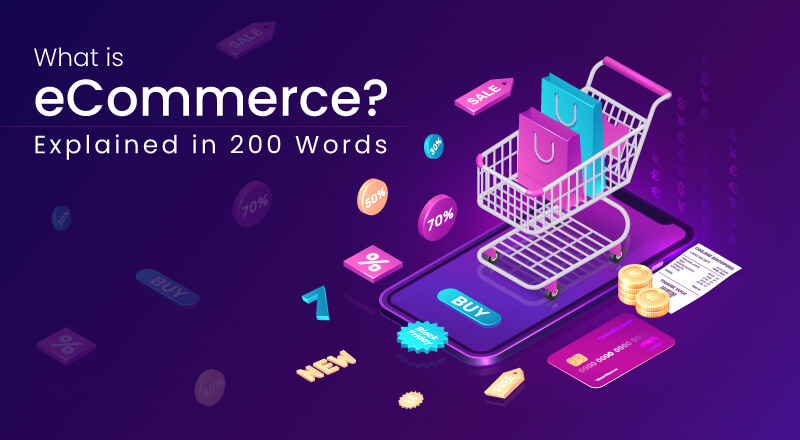

E-commerce means commercial transactions conducted electronically by transferring funds on the Internet
This means whenever you buy and sell products using internet e-commerce is involved.
With no barriers of time/distance, e-commerce enables to exchange of goods or services.
The concept of e-commerce came into existence on August 11, 1994 when a man sold a CD to his friend through his website NetMarket – An American Retail Platform.
Since then, e-commerce has evolved to make buying and selling easier, offering benefits to both consumers and businesses.
Alternative names for e-commerce are e-shop, e-store, internet-shop, web-shop, online store, virtual store, etc.
Types of E-commerce:

Key Benefits
It is a convenient way to shop at your comforts, with just a few clicks.
Online stores like Amazon, Flipkart, Shopify are examples of E-commerce websites.
According to statista, retail e-commerce sales are amounted to 3.53 trillion USD and e-retail revenues to grow 6.54 trillion USD in 2022.
SPEC INDIA is your trusted partner for AI-driven software solutions, with proven expertise in digital transformation and innovative technology services. We deliver secure, reliable, and high-quality IT solutions to clients worldwide. As an ISO/IEC 27001:2022 certified company, we follow the highest standards for data security and quality. Our team applies proven project management methods, flexible engagement models, and modern infrastructure to deliver outstanding results. With skilled professionals and years of experience, we turn ideas into impactful solutions that drive business growth.
SPEC House, Parth Complex, Near Swastik Cross Roads, Navarangpura, Ahmedabad 380009, INDIA.
This website uses cookies to ensure you get the best experience on our website. Read Spec India’s Privacy Policy